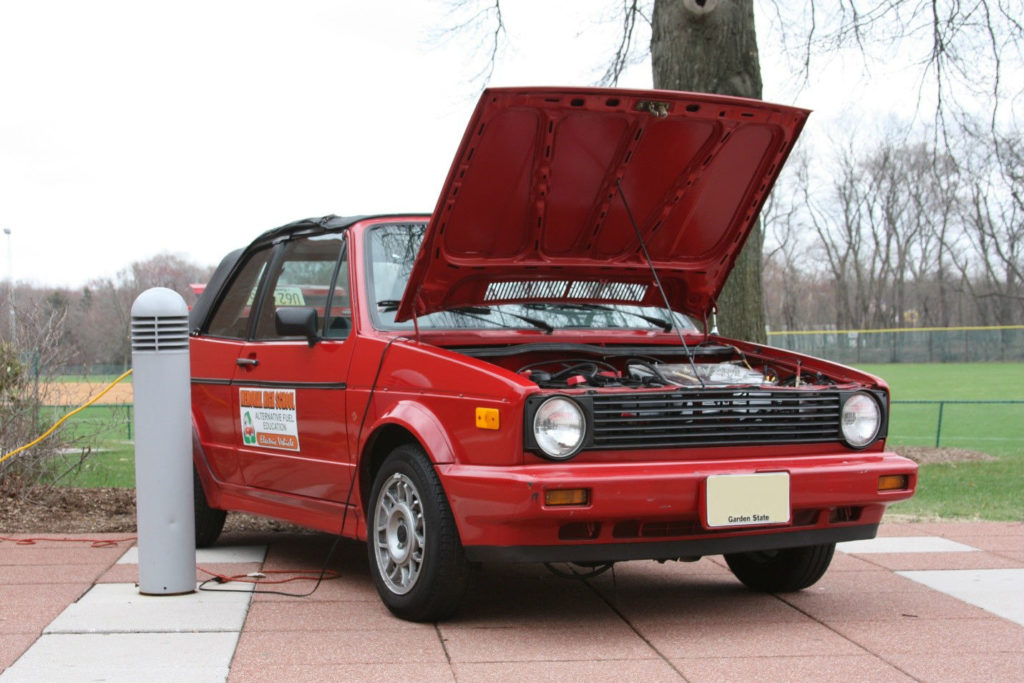
As technology and STEM-focused curricula become ever more important, high school automotive shop classes have been suffering dwindling interest from teachers and students alike. Enter Ronald Grosinger, of Memorial High School in New Jersey, who figured out how to reposition the vocationally oriented course to appeal to a broader audience and prepare students for a wide range of career paths. “If you’re teaching students about gasoline cars, that’s basically the equivalent of 8-track players,” says Grosinger.
Grosinger persuaded his school to purchase a 1990 Volkswagen Cabriolet so that his class could remove the internal combustion engine, install batteries, and rebuild the vehicle to be powered by electricity.

Over time, the students learned how to produce the various mechanical parts in cardboard, then wood, then steel. They welded parts, tackled wiring and learned to solve problems as they arose. Within a year, the student makeup of the class had expanded to include advanced math, science, physics and engineering students. Also, there were many more female students.
The curriculum has evolved over the past ten years, and now is structured around what Grosinger calls the Four Cornerstones of Engineering: Electrical, Fabrication, Design, and Mechanical.

The department has expanded to four teachers, the school added an after-school automotive program, and several of Grosinger’s students have gone on to work in the automotive field. “Teachers should encourage students to explore new and more efficient ways to move a person from point A to point B, whether that system is a train with solar panels on it, a car with an electric motor in it or retrofitting an existing technology with a different energy source,” says Grosinger. “And don’t come up with the solutions for the students.”
For more information about electric vehicles and electric vehicle charging, please contact me. I also invite you to subscribe to receive future posts via email, view my other posts, and follow me on Twitter.

